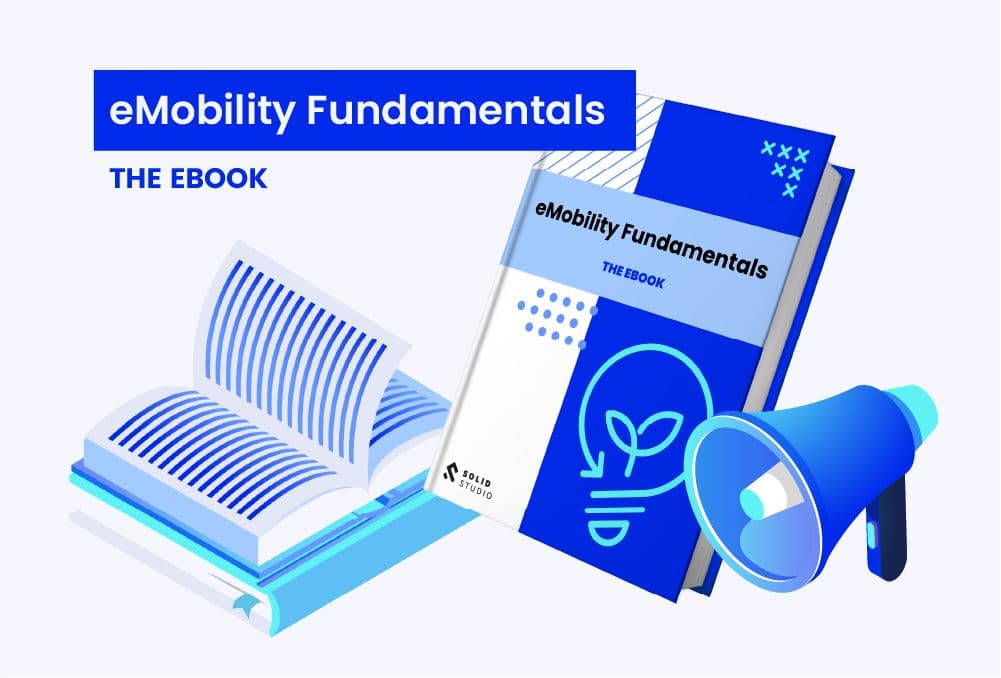At Solidstudio, we’ve been on the eMobility journey for almost 5 years now and one thing we can for sure say about it, is that it was extremely knowledge-accumulating.
From business to tech, all industry aspects whether it’s the pricing structure and stakeholders mapping, all the way to technicalities and features of eMobility-based software, we’ve been through an in-depth practice. Having experienced that, we also know how difficult it may get at first to grasp the hold of the industry and its different branches
With that in mind, we decided to gather years worth of publications from our experts and put them altogether in one comprehensive piece covering various aspects of the EV industry.
Our comprehensive new ebook is a must-read for everyone looking to get up close and personal with the electric vehicle industry. From experienced electric mobility professionals wishing to standardize their knowledge, right through to those who are just starting out in the sector - this book has something for all!
eMobility Fundamentals - what’s in it?
The ebook sets aside 7 chapters that are broken up into smaller parts covering more specific details. All kicked off by a comprehensive glossary, it leads its reader through eMobility one aspect at a time.
The chapters are:
eMobility now and then
The chapter covers a few words about where it all started and how it's currently going with EVs around the world. Given, EVs have come a long way since the first model was introduced in 1884, it’s worth noting how today EVs are becoming increasingly popular around the world - from China to Europe and America.
Charging
Electric car charging has become one of the hottest topics surrounding EVs, and consequently a major source of confusion for many potential buyers. Although significant gaps in infrastructure exist worldwide, there are still plenty of charge point operators fighting to prove that these green technologies bring great value despite any skeptics attempting to discredit them. In the chapter, we elaborate on matters such as:
- EV batteries
- Charging networks
- Smart charging
- V2G technology
- Dynamic Load Management
Interoperability: open standards and eRoaming hubs
Navigating the world of eMobility can be a complex undertaking. In our third chapter, we investigate how eRoaming and open standards serve as vital connectors between Charging Point Operators, EV Drivers and more - bridging multi-dimensional gaps enabling better access to charging infrastructure for all. We take an in-depth look at what each hub offers along with the key functionalities behind these powerful tools that simplify universal connection across many networks. In the ebook, we touch upon:
- eRoaming hubs - Hubject, Gireve, e-clearing.net
- Open standards - OCPI, OCPP, OSCP, ISO 15118
Structure of the industry - pricing and stakeholders
There are many different units, regulations or even location-based factors that impact the tariffs, payment methods and billing systems. In the chapter we aim to shed light on the stakeholders that come into play (Charge Point Operator, eMobility Service Provider, Electric Vehicle Supply Equipment Manufacturer) and the financial liabilities between them.
eMobility vs environment - the ecological aspects
Electric vehicles are driving global environmental transformation. As government incentives propel their mass adoption, this chapter seeks to explore the full extent of all that EVs bring to our planet – from reduced air pollution and energy conservation, through arguably more sustainable infrastructure investments, up until detailing what really makes electric cars greener than traditional ones.
Governmental incentives and initiatives advocating the mass EV adoption
The impact of electric vehicles on the environment is one of the most fundamental and widely discussed topics related to eMobility. It’s also the primary inducement of the broadly-promoted mass adoption and various governmental undertakings in the pursuit of it. Here, we'll share some of the biggest EV-advocating initiatives.
The book can be downloaded for free from the box on the left side of the page.

